
How to Increase Google Shopping ROAS for WooCommerce Store
Google Shopping is the number one channel to run your WooCommerce product ads. You don’t have to take our word for it; let’s review some statistics to substantiate our claim.
- Google Shopping Ads dominate retail search ad spending in the US, comprising 76.4%.
- They drive 85% of clicks in Google Ads and Shopping campaigns, exhibiting a 600% higher click-through rate than standard text ads.
- Retailers experience a solid 10-15% conversion rate with these ads while maintaining a 30% lower cost-per-click than text ads.
- The average click-through rate (CTR) for Google Shopping Ads is around 0.86%, with a relatively low cost per click (CPC) of $0.66, often resulting in exceptional brand profits.
- These ads boast an average conversion rate of 1.91%, significantly outperforming text-based advertisements.
- Google Shopping listing ads, in general, achieve a 30% higher conversion rate than text ads.
However, creating Google Shopping ads differs completely from traditional text ads.
In traditional ads, you have to manually research keywords, input title, and body content, and upload your logo and images individually for every single ad.
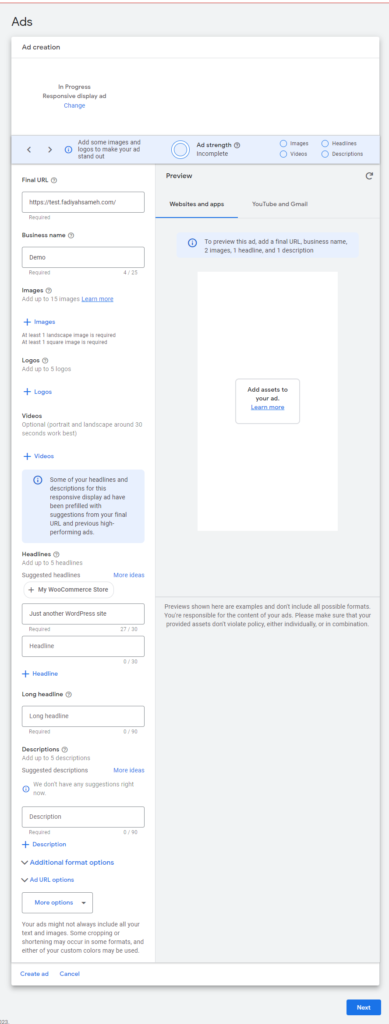
On the other hand, Google Shopping ads are generated automatically based on the WooCommerce product feed you submit on Google Merchant Center.
Therefore, you must know how to run these product ad campaigns successfully and achieve Google Shopping ROAS.
While you can learn all about Google Shopping free listings and product ads from our previous articles, today, we’ll delve into the ROAS Google Shopping ads formula.
What is Google Shopping ROAS?
ROAS means Return on Ad Spend. This term is essential, and you must learn to understand this in order to measure the success of your Google Shopping ad campaign.
Google Shopping ROAS is a metric that basically tells you how much money you make for every dollar you spend.
Google makes it fairly easy, especially for WooCommerce/eCommerce store owners like you, to measure the exact dollar amount you earn for each dollar you spend on shopping ads.
How to Calculate Google Shopping ROAS using Formula
Here’s the formula:
ROAS = Revenue (Conversion value) / Ad Spend (Cost)
For example, if you generated $200 in revenue from Google Shopping ads while spending $40, your ROAS would be 5, or 500%.
This means you earned $5 for every $1 spent on ads.
Why is ROAS important for Google Shopping campaigns?
ROAS is critical for measuring the success of your Google Shopping campaigns because it directly ties your ad spend to your revenue. It goes beyond just measuring clicks or impressions, which can be misleading indicators of success.
Here are some key reasons why ROAS is so essential:
Tracks profitability
ROAS tells you how much profit you actually generate from your Google Shopping ads. It ensures you’re not just breaking even or even losing money on your ad spend.
Optimizes bidding strategies
Understanding your Google Shopping ROAS helps you set target ROAS bidding strategies in Google Ads. This automatically adjusts your bids to maximize your return on investment within your specified ROAS goal.
Compares campaign performance
You can use ROAS to compare the performance of different Google Shopping campaigns and Google Shopping product groups.
This helps you identify the most profitable campaigns and areas for improvement.
Informs strategic decisions
Google Shopping ROAS data can inform your overall marketing strategy.
It helps you understand which products are most profitable to promote through Google Shopping and where you can allocate your budget for maximum impact.
In short, Google Shopping ROAS is your gauge for measuring whether your Shopping campaigns are actually making you money. It’s a crucial metric for anyone running Google Shopping ads, as it tells you if your efforts are leading to real financial success.
By focusing on and continually optimizing your ROAS, you can ensure your Google Shopping campaigns are delivering a positive return on investment and contributing to the overall profitability of your business.
Before we take a deep dive into improving Google Shopping ROAS, you need to know how to generate Google Shopping ads. The setup process will give you a clear picture of how a shopping campaign works and how to optimize and achieve Google Shopping Target ROAS.
How to set up and generate Google Shopping ads
Create a WooCommerce Product Feed >> Upload it to Google Merchant Center (GMC) >> Connect that GMC to a Google Ads account >> Create a Shopping campaign.
This is basically the entire process of creating Google Shopping ads. When creating a shopping campaign, Google Ads will communicate with the GMC account that has the product feed.
After you finish, it will start generating product ads and distribute them automatically based on your product feed data.
Therefore, the google shopping data feed is the linchpin of the whole process. And because this is the most essential element even for improving Google Shopping ROAS, we will discuss this in detail.
What is a product feed?
To put it simply, it’s an export file that contains all your WooCommerce product data. It includes your product title, prices, descriptions, categories, and every characteristic your product pages have, as well as the ones Google requires you to input.
In a product feed, these characteristics are called attributes.
Here’s an example –
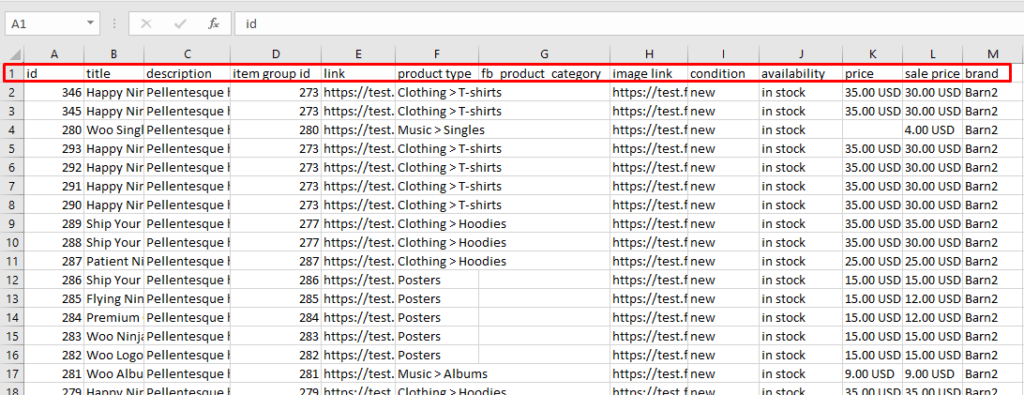
The red-marked column headers are the attributes.
Here’s a list of the most common or required attributes for the Google Shopping feed.
- Unique Product Identifier (ID): An exclusive code for each product distinguishing it from others.
- Product Name: The title or name assigned to the product for identification.
- Regular Product Price: The original price of the product before any discounts or special offers.
- Product Description: A comprehensive overview or details describing the product.
- Product Page URL: The specific web address leading to the product’s page on your website.
- Product Category: The grouping or classification that defines the product’s type or nature.
- GTIN/MPN: The Global Trade Item Number (GTIN) or Manufacturer Part Number (MPN) associated with the product.
- Product Condition: The state or quality of the product, whether it’s brand new or used.
- Brand: The specific company or manufacturer associated with the product.
- Image Source URL: The web address pointing to the image used to represent the product.
- Stock Availability: The current status indicating whether the product is available or out of stock.
Creating a product feed manually
As you can see in the example, you can create a feed in an Excel file, setting the attributes and column headers and pasting your product data underneath. Simple, right?
Not actually. This would work for a non-changing few products, but for a fully functional WooCommerce store, you will need a product feed management tool/plugin.
If you create a Google Shopping feed manually, it will be time-consuming and prone to many errors. In addition to regular fields, there are attributes, such as Brand, GTIN, MPN, etc., that are not available on Woo product pages.
You can’t possibly enter data for these attributes in the feed unless you create custom fields for them on WooCommerce. Most importantly, updating your Google Shopping feed every time you make any changes would be an arduous task.
You will always be at risk of Google rejecting your feed or displaying wrong information on the ads and listings. Instead of earning revenue and reputation, you will lose the trust of your customers.
Here are some statistics to prove why manually creating a feed is a bad idea.
- In 2022, approximately 7% of Google Shopping feeds were rejected due to significant Google Shopping data feed errors.
- About 5.53% of products faced rejection due to inaccurate GTIN values during the same period.
- Shipping-related issues contributed to around 23.49% of all feed rejections.
These statistics highlight the complexities of managing Google Shopping feeds manually. Your solution is using a CTX Feed- Woocommerce product feed management plugin.
The plugin does all the product copy-pasting and updating automatically for you, removing all manual labor.
This is a one-stop solution for not only creating a google shopping data feed but also for connecting and managing product feeds on Google Shopping.
This plugin can automate almost the entire process and help you improve Google Shopping ROAS significantly.

Creating a Google Shopping feed using CTX Feed
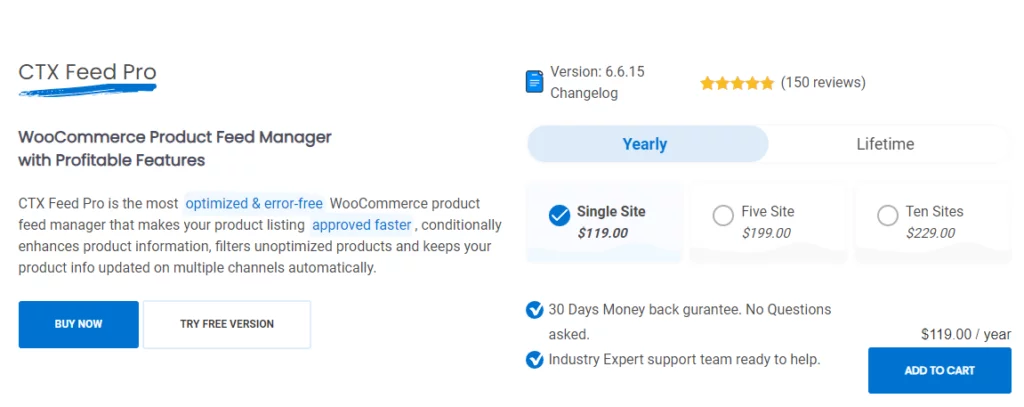
Creating a google shopping product feed using CTX Feed is incredibly easy. The plugin has a built-in template for all the 130+ channels it supports, including Google Shopping.
The template knows all the necessary attributes and guidelines Google Shopping requires. You simply select the template and hit the generate button; it’s as simple as that.
Wait, that’s not just it.
CTX Feed also allows you to host your feed file in your WordPress hosting and connect to Google Merchant Center through the feed URL.
And the plugin has automatic updates that update your feed files at your set interval.
As a result, it saves you from all manual feed management tasks and ensures Google always displays the right information on listings and ads. Moreover, the plugin has all the custom fields (Brand, MPN, GTIN, etc.) integrated into its settings, which can be enabled on one toggle.
This is a huge relief for the non-tech people. If you have come across creating custom fields on WordPress, you know how technical it is to add them.
Without further ado, let us walk you through the Google Shopping feed generation process using the plugin.
You can upload the featured filled CTX Feed Pro version or install the free version
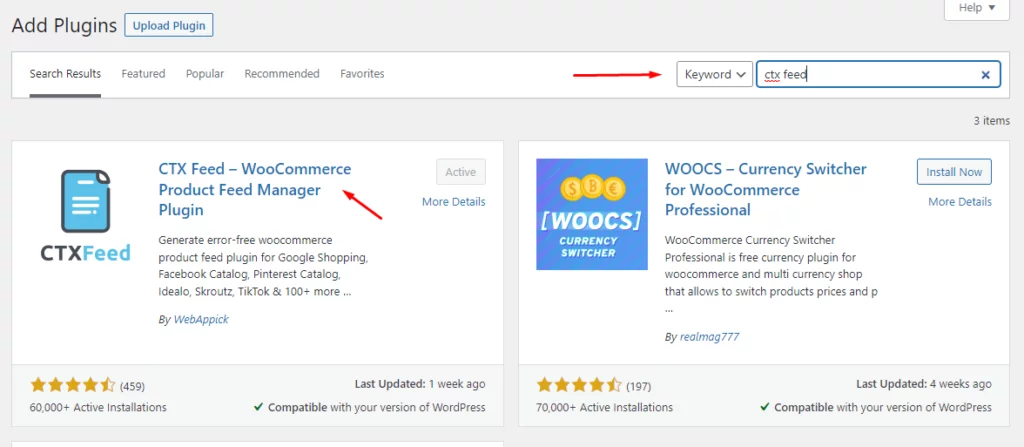
After activating, click the following menu to start creating your feed.
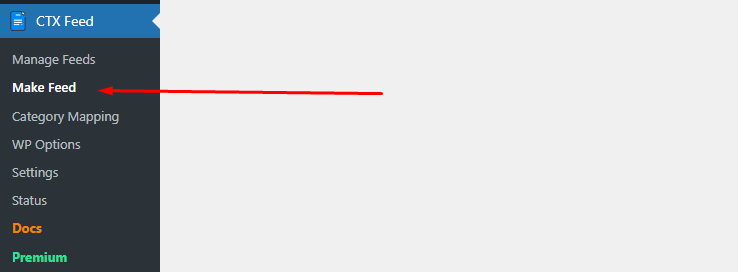
The template dropdown is the treasure trove.
Select the Google Shopping template, and the plugin will do its magic.
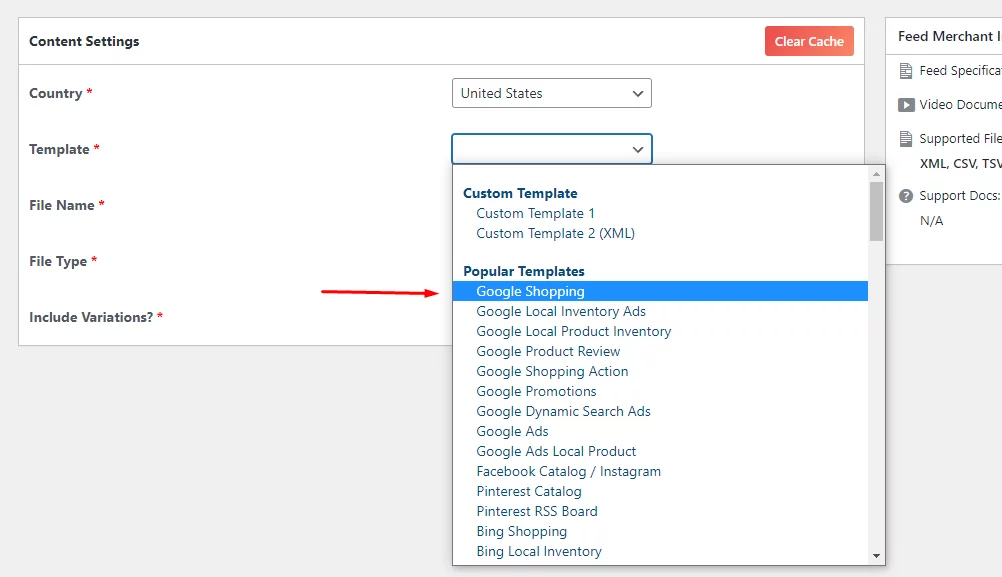
As you can see, the plugin automatically populated all the required attributes.
Select a file type and hit the generate button, and your job is done.
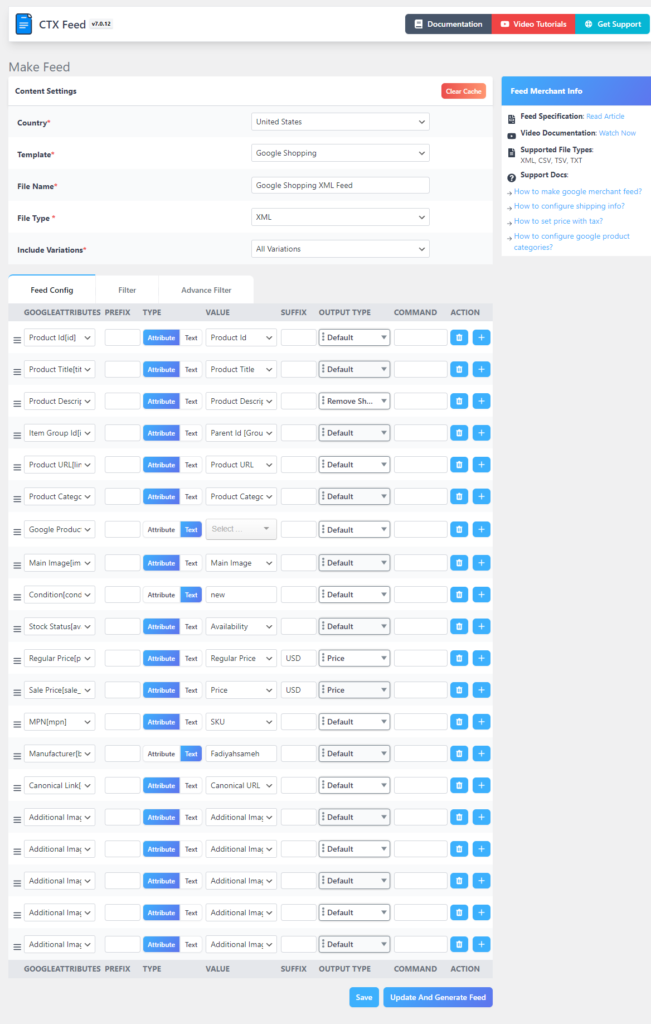
To enable custom fields, Go to Settings >> Custom Fields.
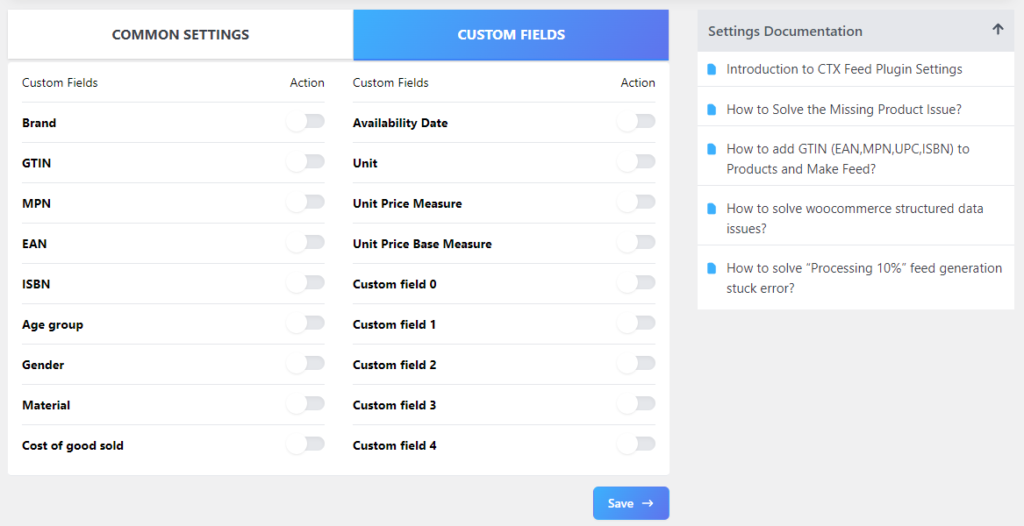
Find the new feed file on the Manage Feeds page, where you will also find the automatic update feature.
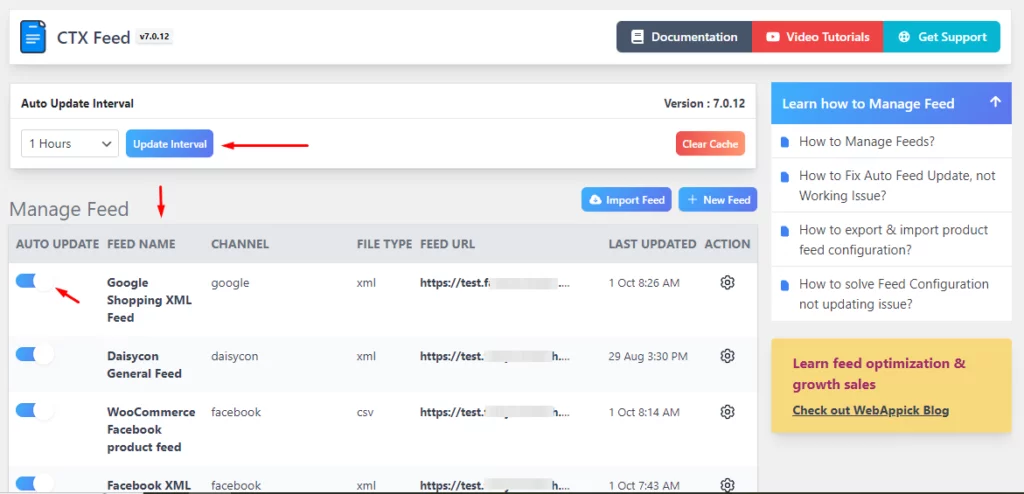
Uploading product feed to Google Merchant Center
We will not go through the entire process of Google Merchant Center setup.
You will need to complete the following steps after you register a free account.
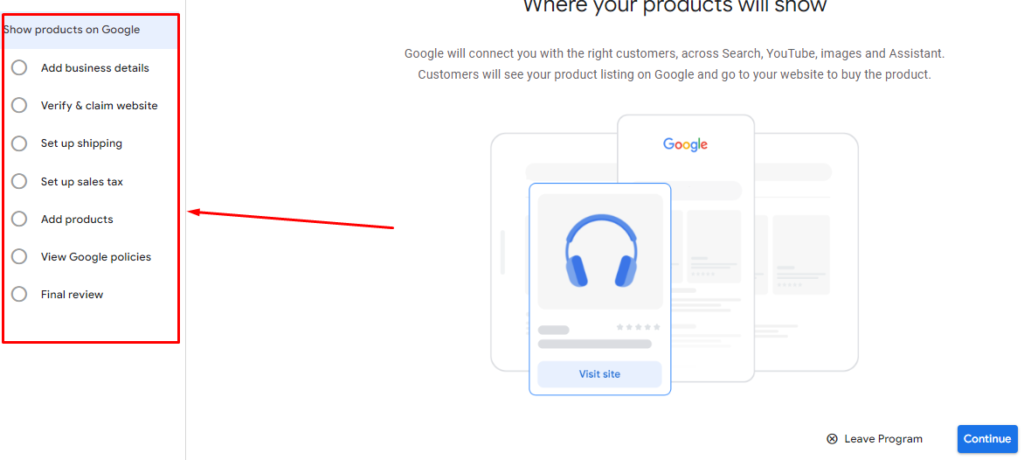
The 6th step will ask you for product upload.
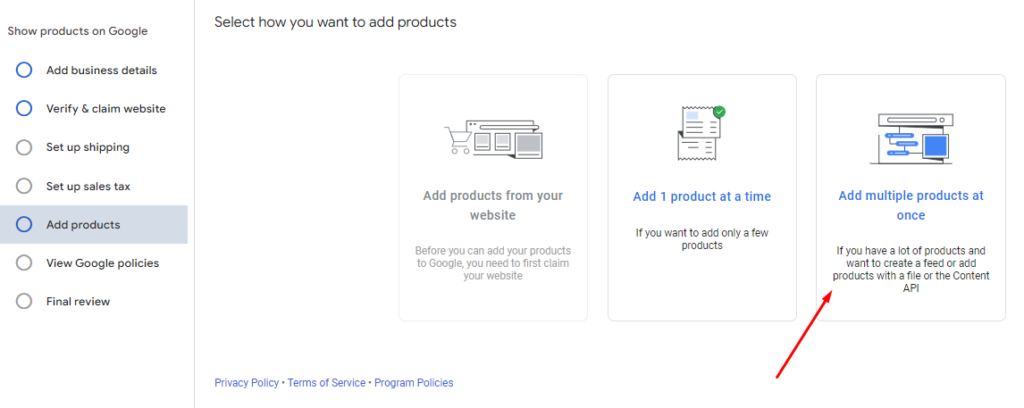
You can enable free listings to display your products on Google Shopping for free.
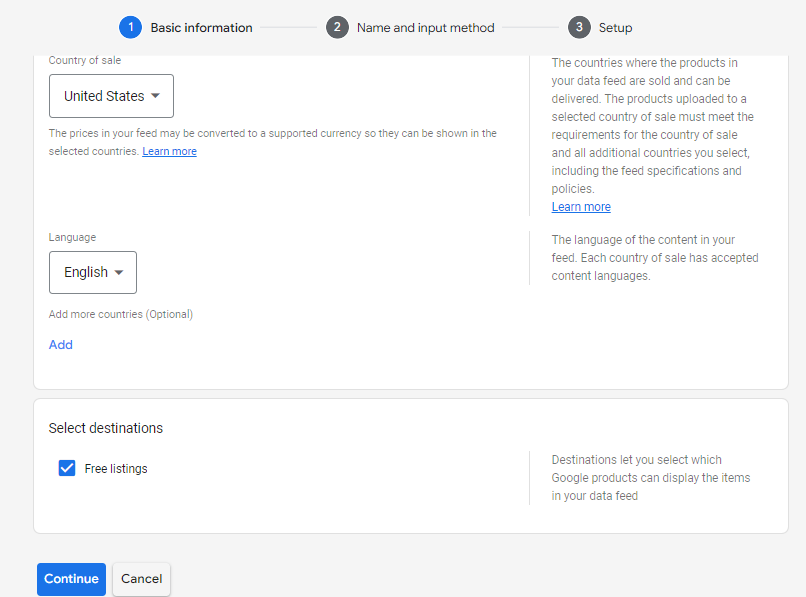
To connect through the feed URL, select the Scheduled Fetch option.
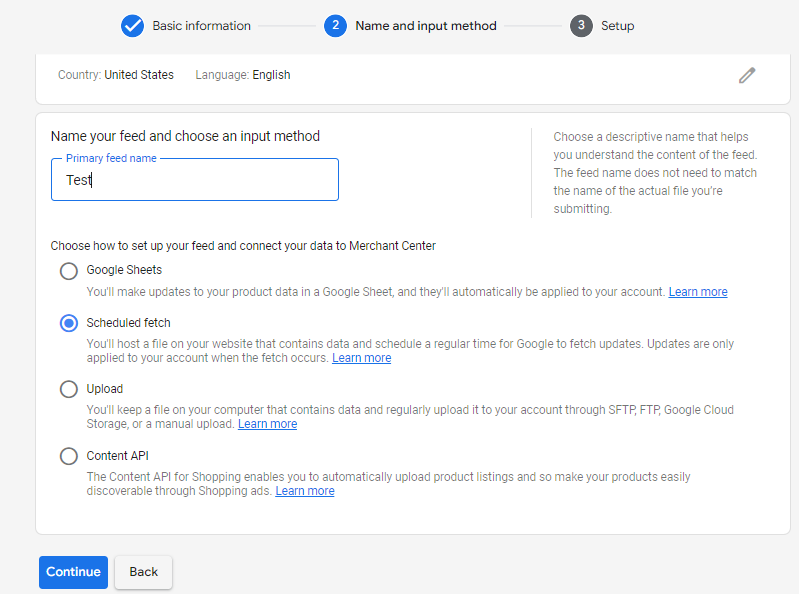
Go back to WooCommerce CTX Feed and copy the feed URL.
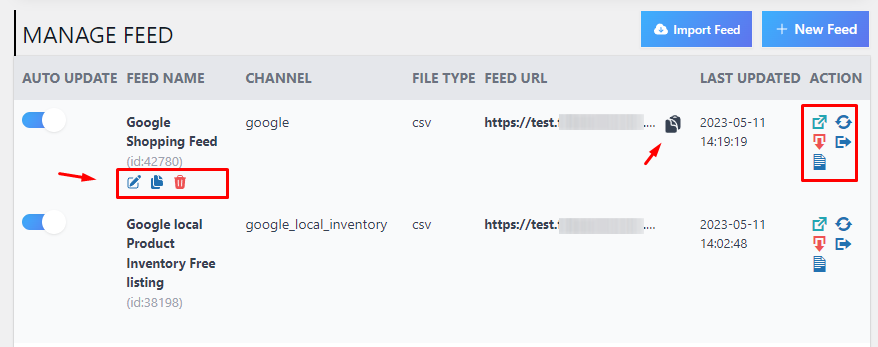
Paste the link and set the automatic update frequency here.
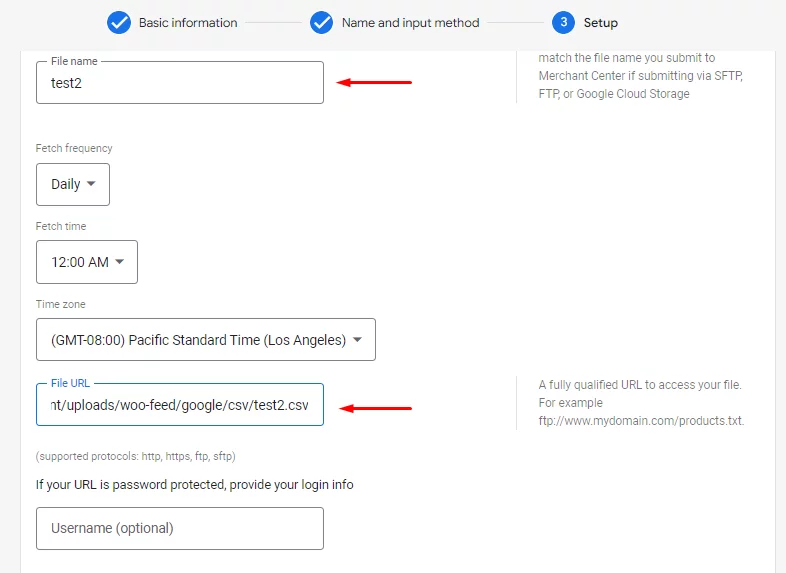
This update frequency means GMC will check your feed through the connected URL according to that interval.
Let’s say you have set hourly fetch frequency on GMC and a 30-minute update interval on CTX Feed.
This means the plugin will update the feed every 30 minutes. Any changes you make during this time will be collected and updated on the feed. GMC will look for updates every hour according to Fetch Frequency.
As a result, Google will always be able to display accurate information, thanks to CTX Feed and GMC.
To generate Google Shopping ads, use the same Gmail you used on GMC to create an account.
After that, you will have to connect that GMC account to this ad account.
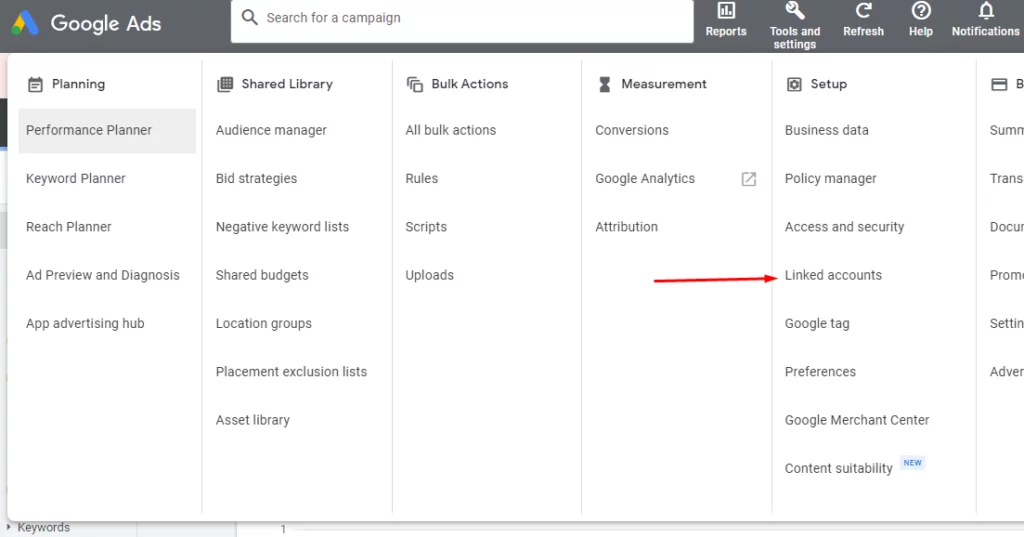
Find and connect GMC.

Now, create a new campaign.
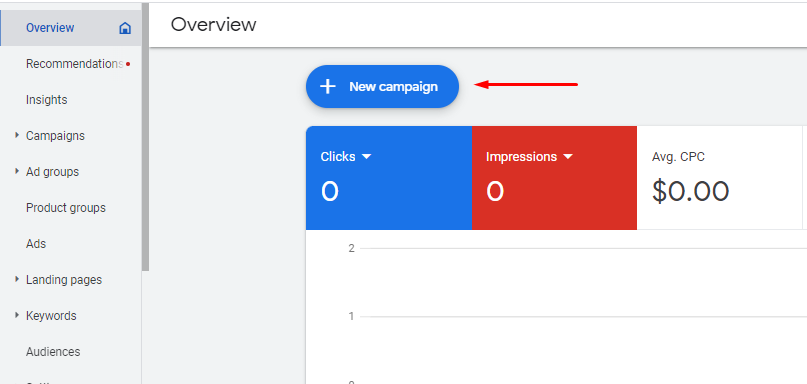
Campaign objective is Sales.
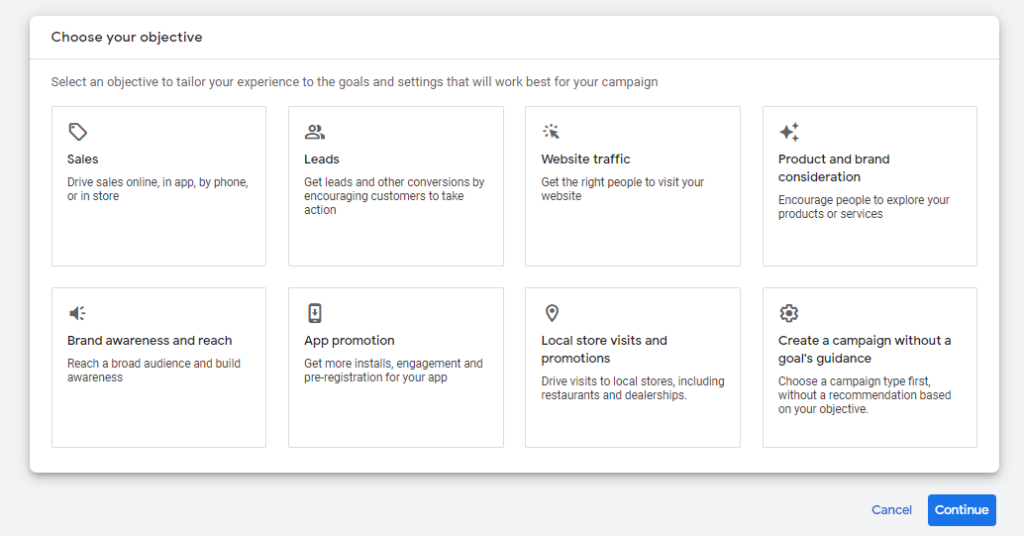
Campaign type is Shopping.
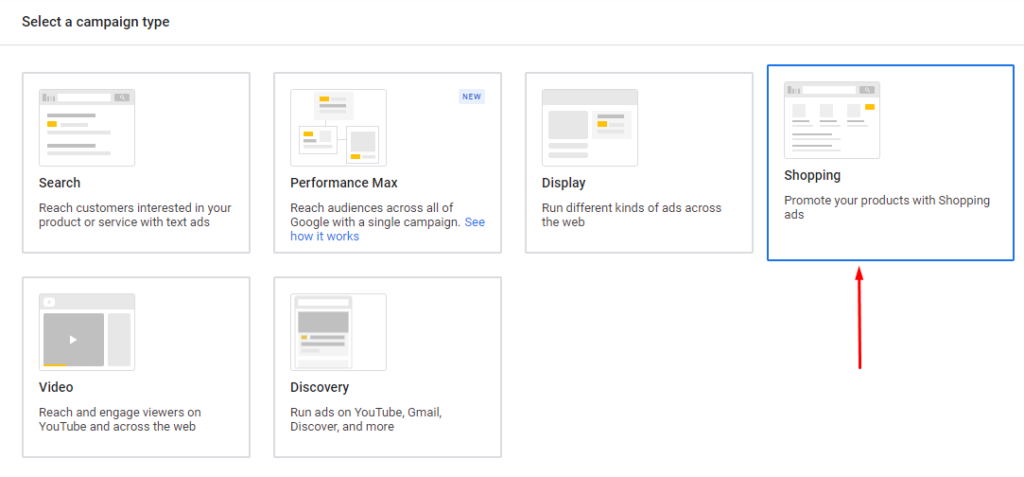
Ads account will automatically assign the product feed from the connected GMC.
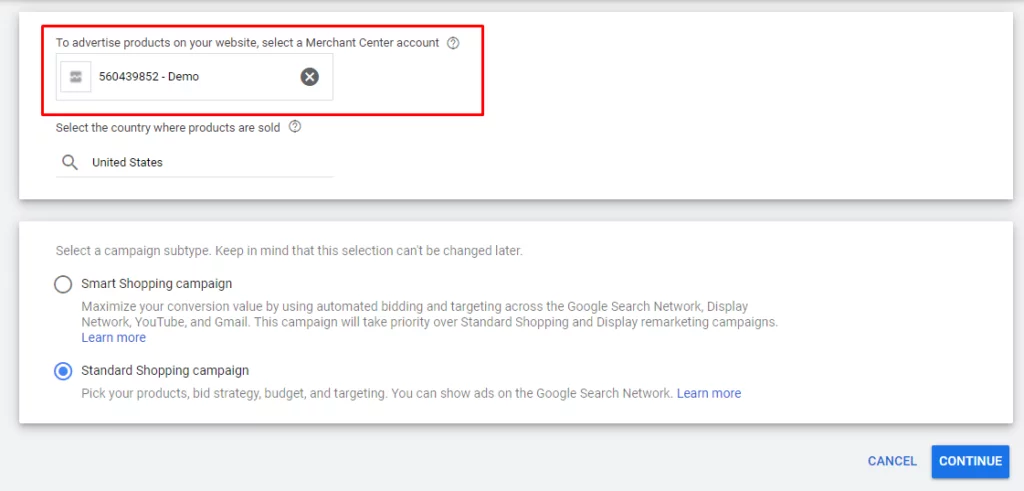
Once you go through the steps to set your bid strategy, ad groups, and other campaign specifics, hit the Create Campaign button.
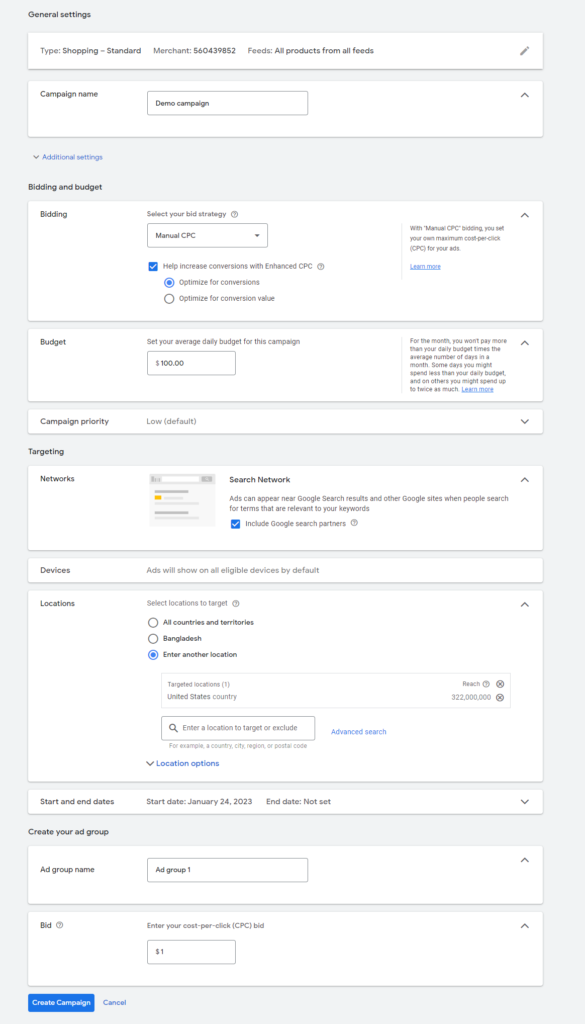
Google will take it from there, using the info from your product feed to whip up ads and show them in searches where they fit best.
How to increase Google Shopping ROAS for WooCommerce store
Now that we have learned the complete process of running product ads.
Let’s discuss how to increase ROAS in Google shopping ads.
Subdividing product groups for better Google Shopping ROAS
When you create a shopping campaign, Google creates one ad group and assigns all products to a single product group under that ad group. Therefore, when you set a budget for the ad groups, it will be applied to all of your products.
Imagine you run an online store selling various items, from inexpensive accessories to high-value electronics. You set a $2 bid for the default single ad groups. Now, in this ad group, both your $10 phone cases and your $1000 laptops are competing for attention with the same bid.
Here’s the catch: every click on any product, whether it’s a low-cost phone case or a high-ticket laptop, might cost up to $2. With this setup, you might end up spending the same amount on ads for less profitable items as you do for high-value products. As a result, you might drain your budget faster on less profitable sales while missing out on potential profits from higher-value items.
Solution – create and subdivide product groups. You can split up these product groups, organizing your products based on their performance. This helps you decide how much to bid on them.
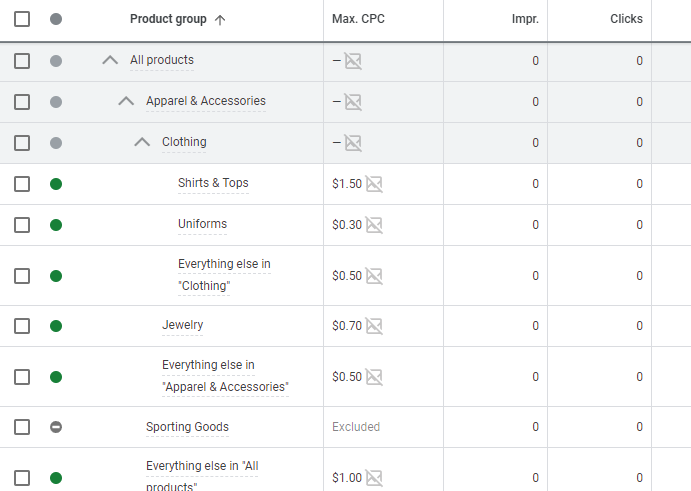
Maybe you bid a bit lower on similar products or crank up the bids for the ones that are selling like hotcakes. This helps you figure out what people are searching for and which products are really bringing in the sales.
And that’s where the magic happens. By knowing what’s working and where to put your money, you make smarter advertising choices.
You can also exclude/pause products that are not yielding your desired result or simply eating up your budget. Ultimately, this can lead to better returns on your ad spend.
Set bid strategy set to Target ROAS
Make sure you pick the right bidding strategy – go for “Target ROAS.” It lets you set a goal for how much you want to earn for every dollar you spend on ads.
But here’s the trick: if you set a really high goal, you might not spend all your budget. So, start a bit lower than your actual target and see how it goes.
If things are looking good, you can increase it later on. It’s like aiming for a bullseye but starting with a practice shot to get it just right.
To set Target ROAS Google shopping bid strategy, select the campaign you want to edit. After that, select Tools and find Bid Strategies.
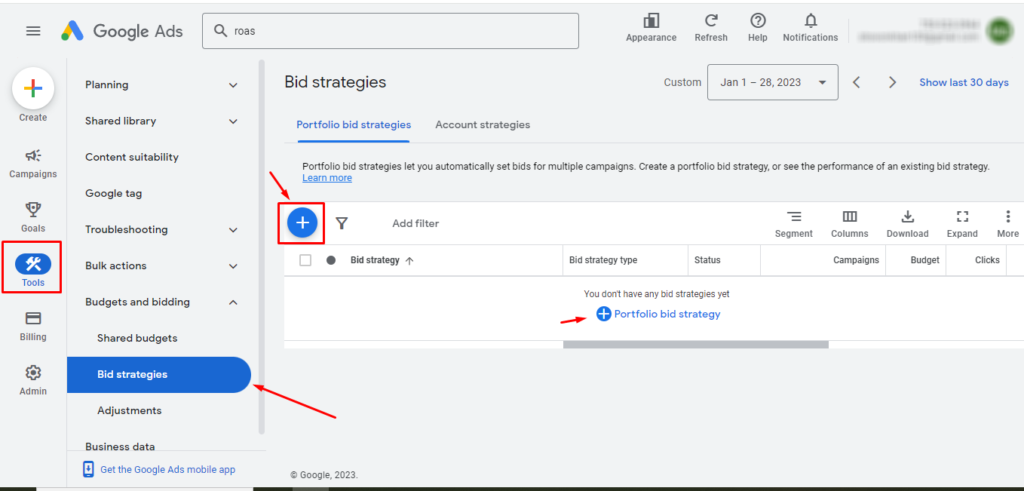
Click the (+) icon and select Target ROAS.
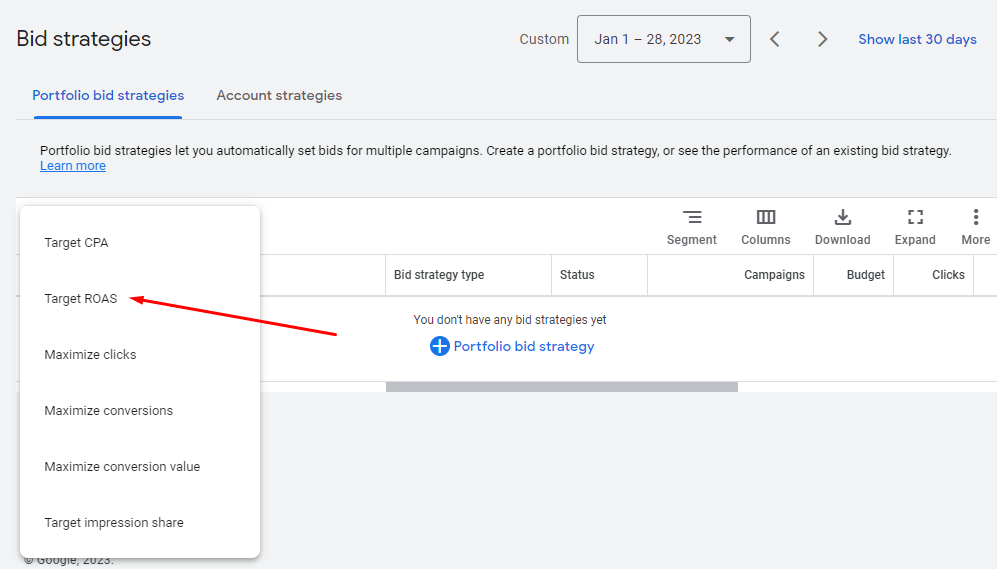
Set target ROAS Google Shopping as per your goal.
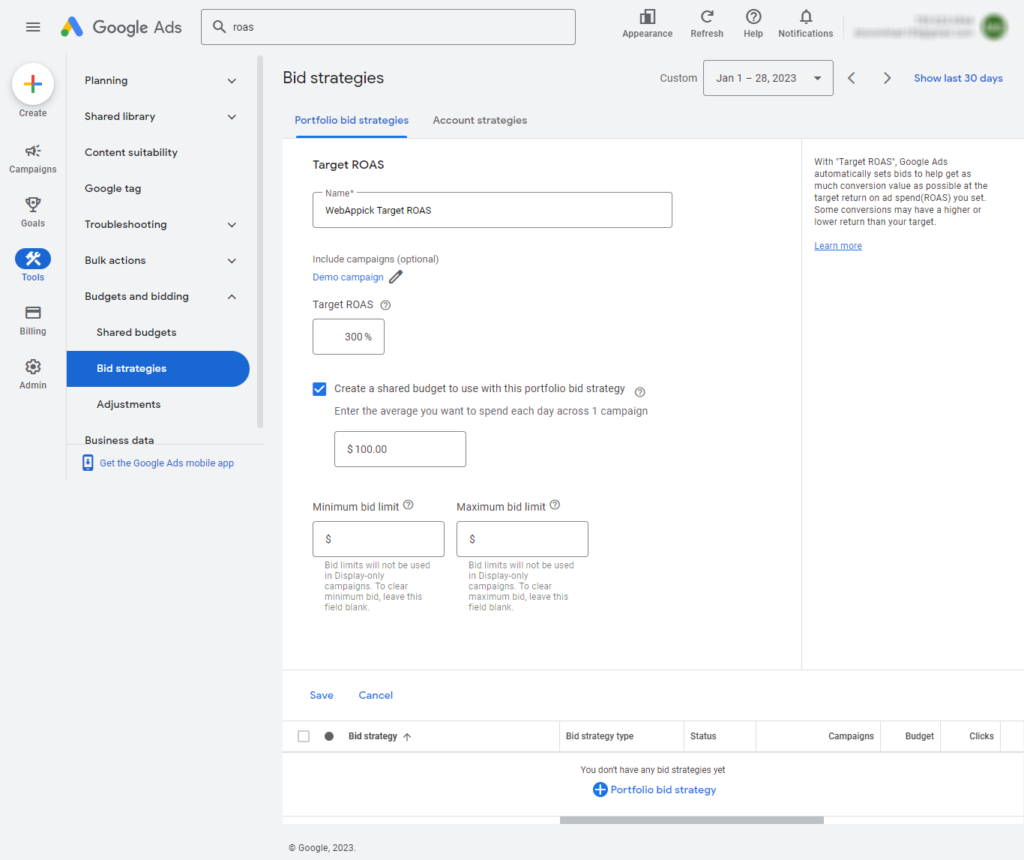
Optimizing product feed for Google Shopping
Creating a compelling product feed for Google Shopping involves several key aspects:
Detailed product information
Make sure your product details are thorough and accurate. This includes titles, descriptions, images, prices, and availability.
Use clear, descriptive titles that highlight the main features and benefits of your products. Compelling descriptions should be informative and persuasive, guiding potential customers toward making a purchase.
High-quality images
The image or images on your Google Shopping is the most important element that grabs the attention of your customers. You must use high-resolution, visually appealing images that showcase your products from different angles.
This helps customers get a better feel for what they’re buying, increasing the likelihood of clicks and conversions.
Google Shopping Ads Image Requirements: The Ultimate Guide
Proper categorization
Google Shopping has its own category structure. To make sure your products or product ads appear on relevant searches, you should map your WooCommerce categories with Google shopping categories.
You can do this with minimum effort with CTX Feed. The plugin has a dedicated category mapping menu.
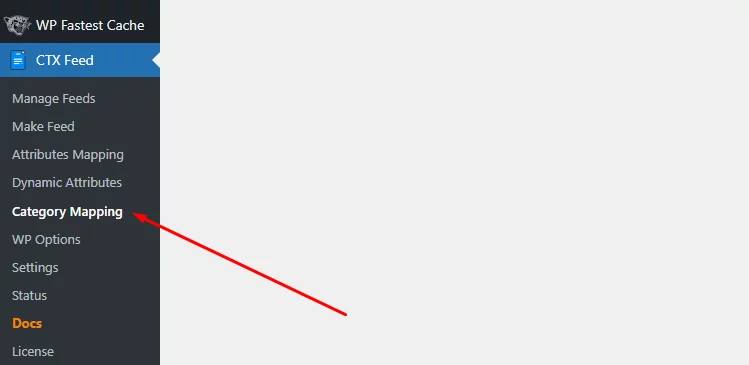
Create a new category mapping and select your channel/merchant.
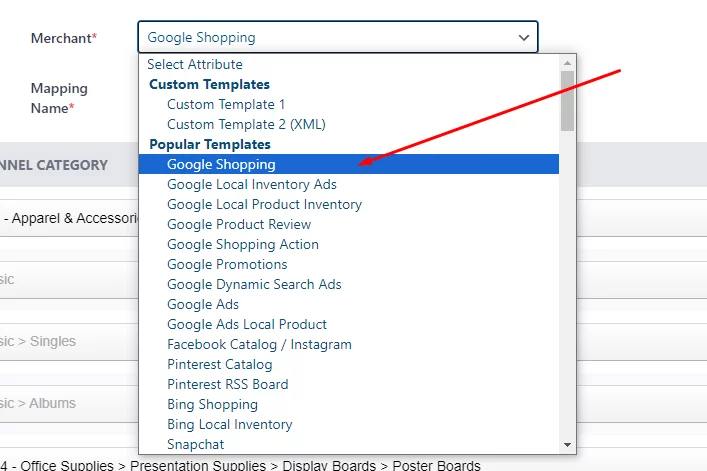
CTX Feed will display your existing categories, and you can map them from the right dropdown. Here’s how it may look after mapping.

After that, you can assign this new attribute to your Google feed creation window.
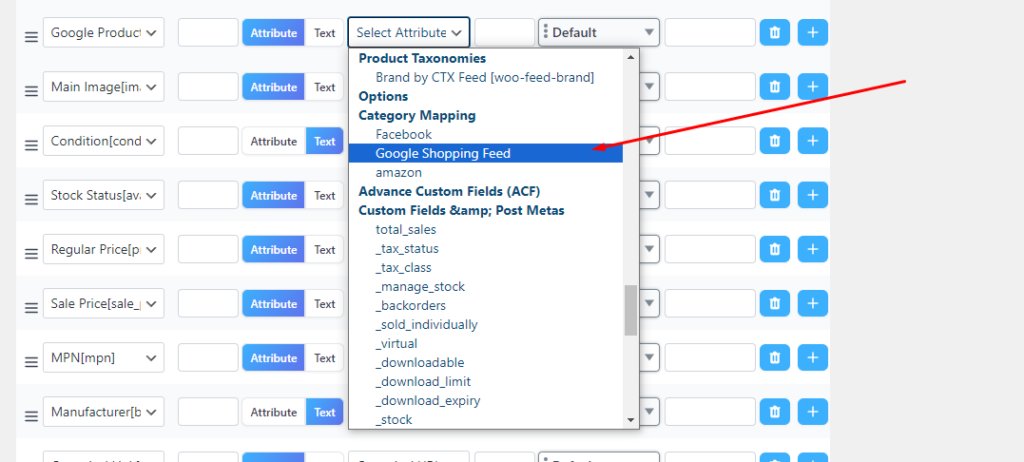
GTINs and other identifiers
Include Global Trade Item Numbers (GTINs), Manufacturer Part Numbers (MPNs), and other unique identifiers. These help Google match your products with user queries, improving the accuracy and visibility of your listings.
We have already walked you through how easily you can add these fields on WooCommerce using CTX Feed.
Regular updates
Keep your product feed up to date. Whether it’s changes in prices, stock availability, or new products, ensure that your feed reflects the most current information. Any discrepancies can lead to rejected listings or a poor user experience.
Make sure you enable automatic updates on CTX Feed and set an interval that suites you best.
Structured data markup
Implement structured data markup on your website. This helps search engines understand your product information better, potentially improving your products’ visibility in search results.
Optimization for Mobile
Given the prevalence of mobile shopping, ensure that your product feed and website are optimized for mobile devices. This includes mobile-friendly images, easy navigation, and a seamless shopping experience on smartphones and tablets.
Optimizing your product feed for Google Shopping involves attention to detail and continual refinement. By providing accurate, compelling, and up-to-date information, you increase the chances of your products being seen by potential customers and driving better Google Shopping ROAS for your WooCommerce store.
Adding negative keywords for improving Google Shopping ROAS
In Google Shopping campaigns, negative keywords play a crucial role in improving your ROAS. These are the keywords you don’t want your ads to show up for. Let’s break it down.
Imagine you’re selling high-end headphones, but you don’t sell used or refurbished ones. Adding “used” or “refurbished” as negative keywords helps ensure your ads don’t pop up when someone’s searching for those terms. This way, you’re not spending your advertising budget on clicks that aren’t likely to lead to sales.
Negative keywords help refine your targeting, ensuring your ads reach the most relevant audience. They prevent your products from showing up in searches where they aren’t a good fit, focusing your ad spend on potential customers who are more likely to make a purchase.
For instance, if you sell professional-grade cameras but not entry-level ones, adding “entry-level” or “basic” as negative keywords helps filter out searches from users looking for less advanced products.
To add negative keywords, go to the ads account and click all campaigns. Under Audiences, keywords and contents, click on Search Keywords.
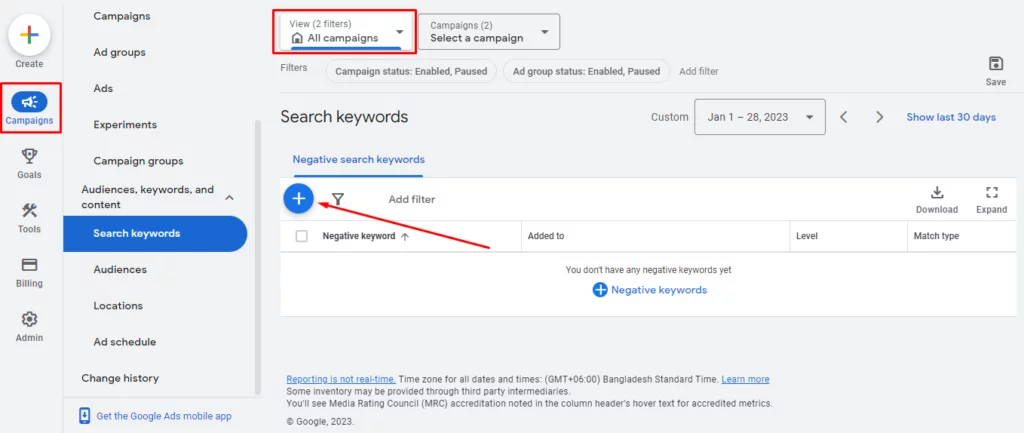
You can add your negative keywords from there.
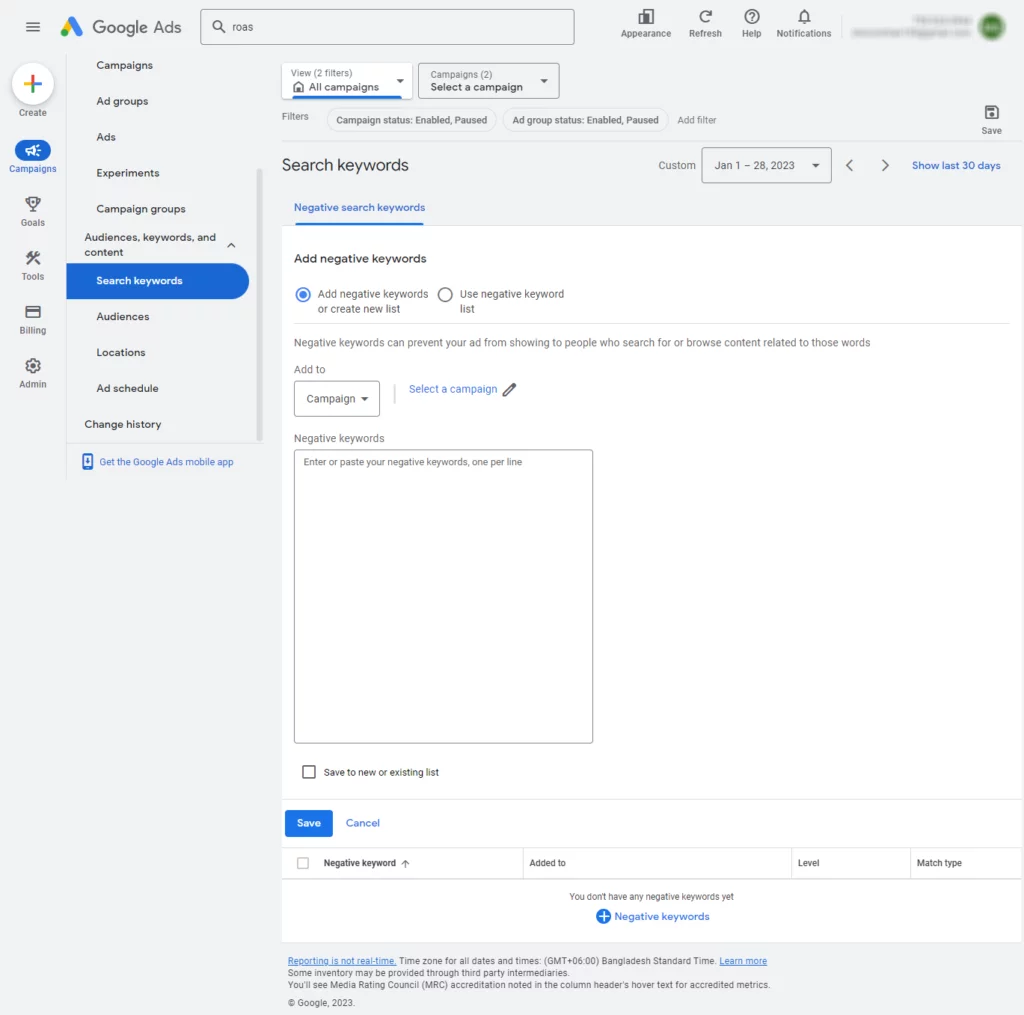
By strategically using negative keywords, you’re optimizing your campaign to reach the right audience, increasing the chances of clicks turning into actual sales. This, in turn, improves your Google Shopping ROAS by ensuring that your advertising dollars are invested where they’re most effective.
Identify budget hogs
Some products might eat up your budget without leaving much for others. Look for these ‘budget hogs.’ If they’re converting well with a high Google Shopping ROAS, consider giving them their own campaign and budget. But if they’re spending lots without converting, it might be time to pause or move them to a separate ‘poor performers’ campaign.
Campaign structure
Here are some suggestions for organizing your campaign structure to improve Google Shopping ROAS.
- Tiered approach: Organize campaigns by product categories, brands, or profitability. This allows granular control over bids, budgets, and ad groups.
- High-performing groups: Separate top-selling products into dedicated campaigns for aggressive bidding and budget allocation.
- Long tail targeting: Create campaigns for specific product features or niche keywords to capture targeted traffic.
Targeting
Targeting is a crucial part of any marketing or ad campaign. Your Google Shopping ROAS will highly depend on how effectively you set your targets.
- Audience targeting: Leverage demographics, interests, and purchase intent to reach relevant users across the shopping journey.
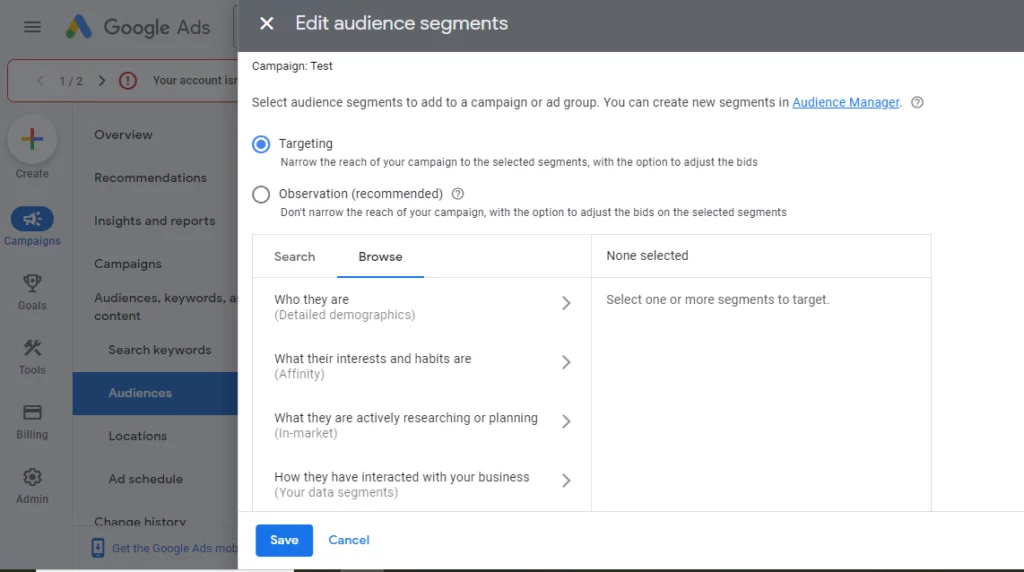
- Similar audiences: Utilize Google’s Similar Audiences feature to target users who share characteristics with your existing customers.
- Location targeting: Prioritize regions with high purchase intent and adjust bids accordingly.
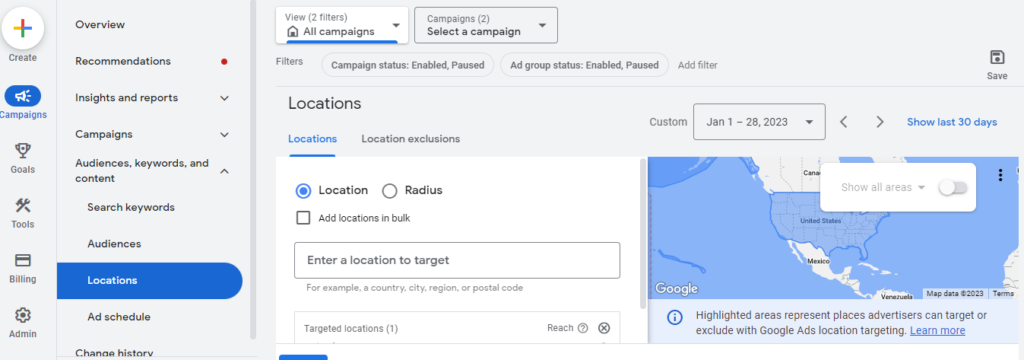
- Dayparting: Schedule campaigns during peak shopping hours for increased visibility and conversions.
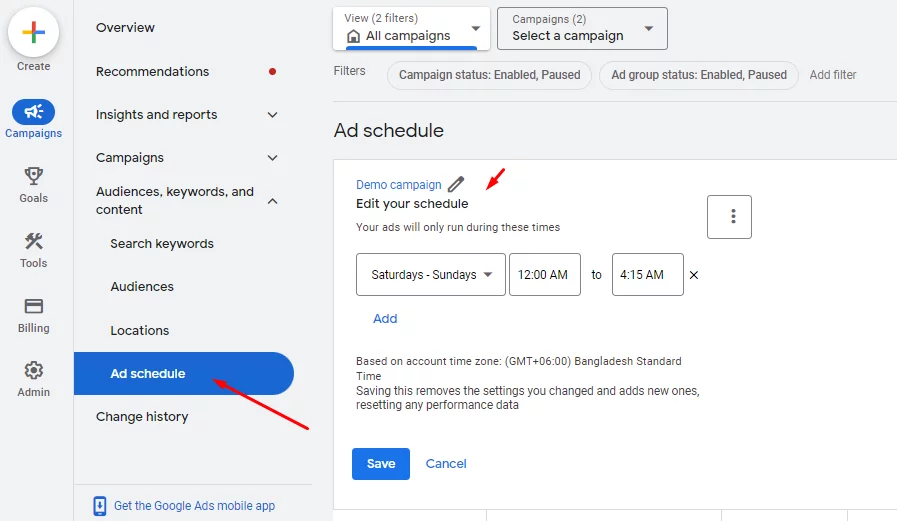
Keyword research for Google Shopping
Even though you cannot input or assign keywords directly on a Google Shopping campaign, you still need them to ensure your ads appear in the right places and searches. You need to implement keywords inside the content of your product feed.
Here are some keyword implementation tips for Google Shopping.
- Product feed optimization: Integrate relevant keywords naturally into product titles, descriptions, and attributes.
- Search term reports: Analyze Google Ads data to discover high-performing search queries and identify new keyword opportunities.
- Competitor analysis: Research keywords used by successful competitors in your niche.
- Keyword tools: Utilize tools like Google Keyword Planner or SEMrush to discover relevant long-tail keywords.
Conversion optimization and analytics
Optimizing conversions for better Google Shopping ROAS is like fine-tuning your store for more sales. It involves tweaking product displays, descriptions, and checkout steps to make it super easy for customers to buy.
By understanding what makes people click ‘buy,’ you can boost your returns on ad spend and make every dollar count. Here’s what you can do –
- Frictionless checkout: Streamline the checkout process to minimize cart abandonment.
- On-site optimization: Ensure product pages are mobile-friendly, informative, and visually appealing.
- Cross-selling and Upselling: Recommend complementary products to increase average order value.
- Conversion tracking: Set up accurate conversion tracking throughout the checkout process to measure campaign effectiveness.
- Enhanced eCommerce reports: Analyze user behavior and identify conversion bottlenecks through detailed Google Analytics reports.
Analytics and reporting
Analytics and reporting for Google Shopping campaigns are a weapon of success. They help you understand what’s working and what needs a tweak.

Imagine having a map showing which paths lead to more sales and which ones don’t. That’s what analytics do for your ads—they show where people are clicking, what they’re interested in, and if they’re buying.
Here are some tips for improving your Google Shopping ROAS through analytics data.
- Go beyond clicks: Analyze key metrics like Google Shopping ROAS, conversion rate, and cost per acquisition to measure campaign profitability.
- Custom reports: Generate tailored reports to track specific campaign goals and identify areas for improvement.
- Benchmarking: Compare your performance against industry averages and competitor benchmarks to identify areas for improvement.
- Regular reviews: Schedule regular campaign reviews to adjust strategies based on data and market trends.
A/B testing for improvement
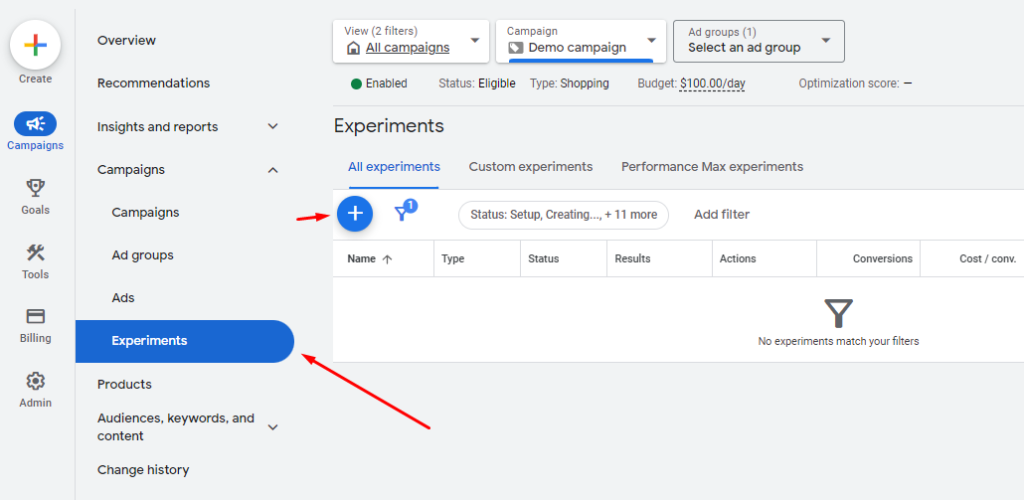
A/B testing is like trying on different clothes to find which one suits you best. It’s a method where you compare two versions of your ad to figure out which performs better.
- Ad copy: Test different headlines, descriptions, and calls to action to identify the most effective messaging.
- Product images: Experiment with different image formats and angles to maximize click-through rates.
- Promotions and offers: Test different discount codes and promotional offers to determine the most compelling offer.
- Landing pages: Optimize landing page design and product presentation to improve conversion rates.
Implementing remarketing strategies
In simple words, remarketing means targeting and displaying ads to those people who have visited your site but didn’t buy anything or those who added products to the cart but didn’t complete the purchase.
Here are some strategies through which you can improve Google Shopping ROAS.
- Dynamic remarketing: Target users who previously interacted with specific products or abandoned carts with personalized ad campaigns.
- Similar audience remarketing: Reach users who share characteristics with your existing customers to expand your reach and drive conversions.
- Abandoned cart recovery: Retarget users who abandoned carts with special offers or incentives to complete their purchase.
- Email marketing integration: Utilize email marketing campaigns to complement remarketing efforts and nurture potential customers.
Adjust bids by device
More clicks might come from mobile, but conversions often happen on desktop. Lower your mobile bid to save budget and focus more on where conversions happen, like desktops.
Use custom labels for price segmentation
Segment your products based on price using custom labels. This way, you can adjust budgets and bids for different price ranges. It doesn’t make sense to bid the same on a $50 and a $250 product!
Display positive reviews
Positive reviews can significantly impact conversions. Ensure your product reviews show up in your ads. You’ll need at least 50 reviews across all your products to get started.
Keep it simple
A complicated strategy doesn’t always mean better results. Sometimes, a simplified approach is easier to manage and track effectively.
Handling poor performers
If a product isn’t delivering even after optimizations, consider pausing or moving it to a ‘poor performers’ campaign. Let the data guide your decisions rather than emotions.
By carefully managing your campaigns, adjusting bids, and monitoring what’s working, you can maximize your Google Shopping ROAS without overwhelming complexity. Remember, data-driven decisions are key to optimizing your Google Shopping campaigns effectively.
Frequently Asked Questions (FAQ)
Good” ROAS for Google Ads depends on industry, goals, and budget but generally ranges from 300%-400%, with a higher possibility for high-margin products.
To up your Google Shopping ROAS, focus on fine-tuning product data, optimizing bids, targeting the right audience, and refining ad content. Continuously analyze performance, tweak strategies based on data insights, and prioritize high-converting products. This helps maximize returns on your ad spend.
Wrap up
Remember, Google Shopping ROAS optimization is an ongoing process. Continuously test, analyze, and adapt your strategies based on data and market trends to maximize your ROAS and achieve sustainable success for your WooCommerce store.
We hope that by implementing the above strategies, you can unlock the true potential of Google Shopping and drive significant increases in ROAS for your WooCommerce business.
